Since moving our chicks to a new coop after our 100-year-old barn fell down, I did a little research for a better way to keep the coop clean.
When we started with six chickens in a small coop, it was easy to keep up with pine bedding and wasn’t a big budget breaker.
Adding 20+ chickens and a larger coop, pine bedding was getting expensive. We started using straw because it’s cheaper, but it was pretty messy in the coop.

When I found how others were using sand in the chicken coop, I knew it was the answer. If you have been thinking about doing something different with the chicken coop, or if you are brand new to chickens, start with sand.
Sand in the coop makes cleaning the coop quick and easy each week.
You only need a muck fork, which is handy for all the other needs around the homestead anyways.
It is like scooping up a giant litter box.
You can see how we started building this chicken coop here.

Here are some reasons I’m a huge fan of sand in the coop.
- Dries out the poop- less bugs being attracted to it
- Better drainage
- Cheap
- Eco Friendly
- Cleaner chicken feet
- Dust baths in winter
- Non-flammable
- Cleaner Chicken Feet- See my post on keeping eggs cleaner
- Conducive to lower ammonia levels
- Better at regulating temperature- cooler in summer, warmer in winter
It’s important to get the right sand.
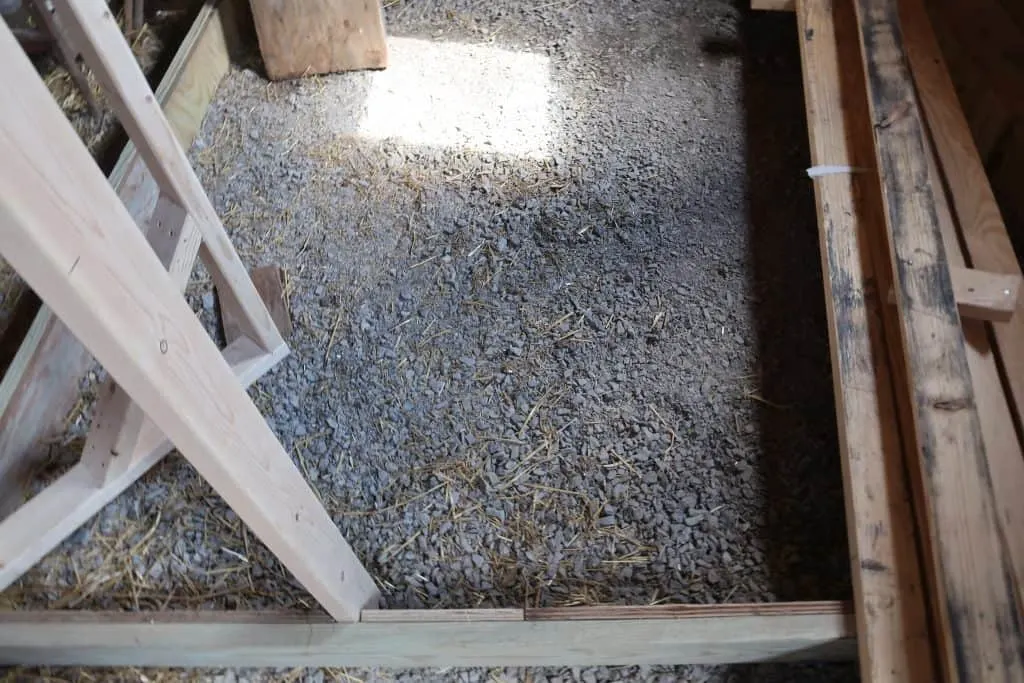
It is best to use construction-grade sand, or bank-run sand. It’s usually cheaper too.
Play sand can cause crop impactions.
I didn’t realize this when we first did our chicken coop with sand. Below is an image with play sand. Our chickens are only in the coop at night- when they are up roosting to lay eggs and get a snack. I didn’t have any issue with this for my chickens, but it could be a totally different story for you.
Do your chickens have an enclosed run? Also, this sand wasn’t as full by the time we hit winter and added more construction sand at that point.
Another issue with play sand, for some, is the dust causing respiratory problems with chickens.
Our chicken coop turned more like construction-grade sand because we have gravel ground, to begin with.
Do yourself a favor and go with construction-grade sand.

This sand is easily found by us at Home Depot and its a 50 lb. bag for $4.45. Or a local farm-type store called Runnings has it as well. Many of these places are offering curbside pick up too.
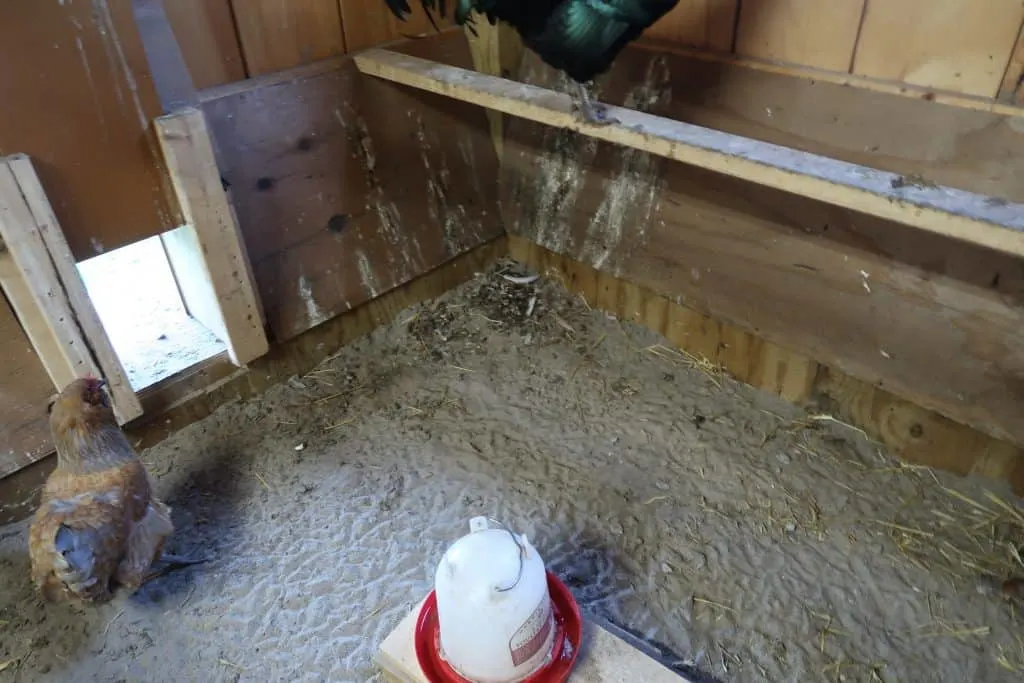
When we built our barn, we left stone for the flooring. It made sand a better choice for our chicken coop. I added seven bags the first time.
We could have added more, but I don’t mind adding a few more bags of sand a couple of times throughout the year.
*Add enough sand in the beginning, go about eight inches from the ground with sand.
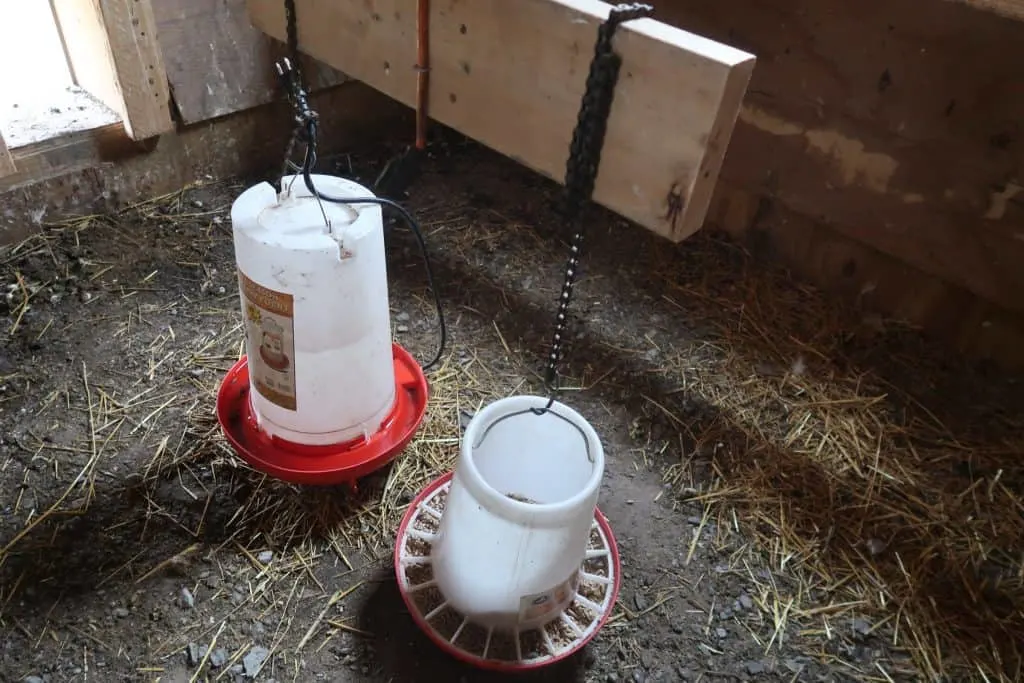
Right now, during springtime, I’m giving it a good clean and then will add 6 or 7 more bags of sand.
Once or twice a week, you can easily scoop out the chicken poop like a cat box. The Durapitch forks work great for cleaning out the coop.
If you start with stones like we did and the sand gets low, start a separate compost pile. I don’t like to have chunks of stone in my compost for the garden.
This also lets you know when you need to add more sand.
Pin: Things to Never add to the Compost Pile

How the Chickens React
If you switch to a sand coop, your chickens may be a bit freaked out at first. The first day we added sand in the morning, and they didn’t want to step back in. They were scared.

A few started to walk back into the coop and were puzzled. They have to walk across the sand to get up to the nesting boxes. They all came back in at night and have been fine ever since.
PIN: How to Get Your Chickens Into a New Coop
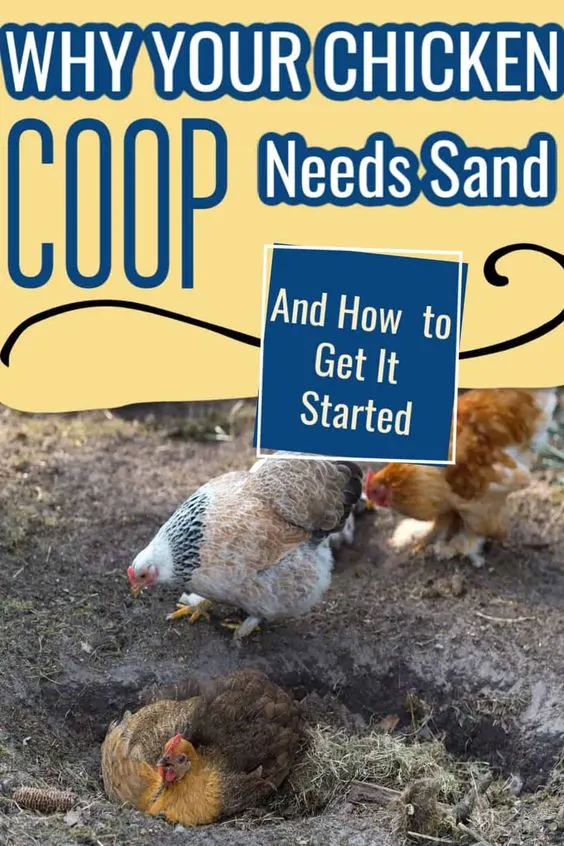
Cons of Sand in the Chicken Coop
You need a thick layer of sand- which means more money upfront.
Although it won’t freeze in the winter, it doesn’t add much warmth like straw for your chickens. Most of the time in the winter, our chickens hang out on the roosts, huddled up together anyways.
Other than that, I say go for it, especially if you are sick of pine shavings.
I highly recommend the sand route and would love to hear from you if you have tried this too.
New to chicken raising? Grab my Ultimate Chicken planner before you go!
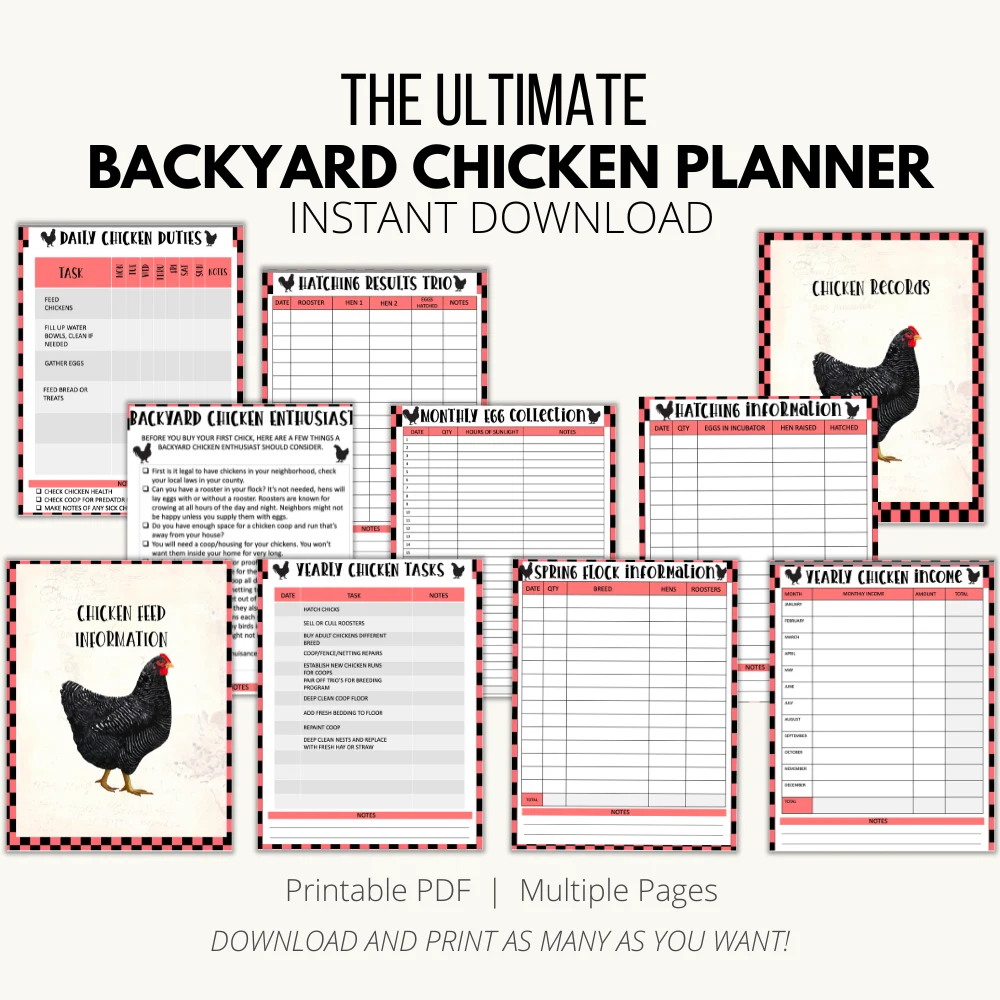
Before you go check out these:

April Lavender
Sunday 4th of June 2023
BRAND new to chickens- as a random rooster picked our house and wouldn’t leave. Over the last week we’ve gotten him a very nice coop and we’re brooding 4 girls inside so he can have a flock. You recommend that we cover the entire bottom of the coop with sand and continue with straw in the nesting area once it’s ready to be occupied?
Also, since the girls are only two weeks old- rooster is the only one in the coop and has slept a couple of times in the nesting area. Is this a bad habit we should break by closing the door to that section?
THANK YOU FOR ALL YOU ADVICE!!!
Tasia
Monday 5th of June 2023
Aww that fun! Do you have bars in the coop that he can roost up on? Or just the nesting boxes? When our Rooster was young he would hide in the nesting boxes too and now he goes to the very top bar in the coop. The problem with him in the nesting boxes is poop on the eggs, but your hens won't be laying for awhile yet.
Brandy Hazen
Wednesday 12th of August 2020
Hi Tasia! We are a new chicken family. Currently our coop has pine shavings, but I have been trying to convince my husband that we need to switch to sand, as I am mostly the one to clean it and it seems much easier to scoop like litter than to try to scoop out of wood shavings. Our chicken run already is pretty much sand, because that's what our soil is (not great for growing things!). And I use all of our yard waste (leaves and pine needles) in the coop. It keeps them busy scratching around and is easy to rake out. My question is what should I use in the nesting boxes in the coop? Should I stick to the pine shavings? One side of their coop has a set of nesting boxes that are still closed up. But I know it will be time to open them up soon and want to make sure we are ready to go when the girls are ready to start laying! Thanks!!
Tasia
Thursday 13th of August 2020
Hi Brandy! Thanks so much for checking out the blog. It's so exciting when you start to raise chickens and a little nerve racking. You can stick with pine shavings for the nesting box. Before we had any other farm animals we always used pine shavings in the boxes. Now we use straw because we have it on hand for the other animals and I don't really buy pine shavings anymore.